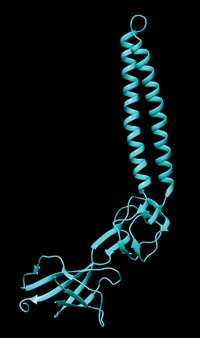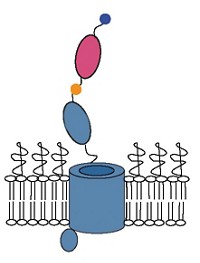Advertisement
Grab your lab coat. Let's get started
Welcome!
Welcome!
Create an account below to get 6 C&EN articles per month, receive newsletters and more - all free.
It seems this is your first time logging in online. Please enter the following information to continue.
As an ACS member you automatically get access to this site. All we need is few more details to create your reading experience.
Not you? Sign in with a different account.
Not you? Sign in with a different account.
ERROR 1
ERROR 1
ERROR 2
ERROR 2
ERROR 2
ERROR 2
ERROR 2
Password and Confirm password must match.
If you have an ACS member number, please enter it here so we can link this account to your membership. (optional)
ERROR 2
ACS values your privacy. By submitting your information, you are gaining access to C&EN and subscribing to our weekly newsletter. We use the information you provide to make your reading experience better, and we will never sell your data to third party members.
Biological Chemistry
Bacterial Sentinels Patrol For Pathogens
Synthetic Biology: Genetically engineered E. coli sense and destroy pathogenic bacteria that can cause antibiotic-resistant infections in people
by Laura Cassiday
July 5, 2013

When hospital patients develop nasty, antibiotic-resistant infections, the bacterium Pseudomonas aeruginosa is often the culprit. In a new approach to killing the pathogen, researchers genetically modifiedEscherichia coli bacteria to detect and destroy P. aeruginosa (ACS Synth. Biol. 2013, DOI: 10.1021/sb4000417).
To combat pathogenic bacteria that have become resistant to some of our most potent antibiotics, Ron Weiss at the Massachusetts Institute of Technology and his team turned to nonpathogenic bacteria. They engineered a harmless strain of E. coli to spot nearby P. aeruginosa through the presence of a molecule called 3OC12HSL. The pathogen secretes the compound to communicate with its bacterial neighbors. Upon detecting 3OC12HSL, the engineered E. coli sentinels deploy a toxic protein called a bacteriocin that specifically enters P. aeruginosa and chops up its DNA, killing the pathogen.
The team’s inspiration for the new approach came from the bacteria themselves, Weiss says. “Bacteria use bacteriocins to regulate their population levels,” he says. “They kill some of their own kind for the good of the colony.” For example, when individual bacteria suffer damage from stressful situations, such as low nutrient levels, they produce bacteriocins along with a protein that pokes holes in the cell. The damaged bacteria then burst open, releasing bacteriocins into their immediate environment and killing many of their neighboring brethren. Some cells, though, survive because they express an immunity protein that stops the toxin’s DNA-chewing machinery.
E. coli bacteriocins can kill only other E. coli, and the P. aeruginosa toxins knock out only those pathogens. The reason is that the proteins first must bind to specific receptors on the bacteria’s surfaces, and these receptors differ between species. So the researchers had to modify the E. coli bacteriocin to strike P. aeruginosa. The team created a chimeric toxin: They combined the DNA-chopping domain of the E. coli toxin with elements from the P. aeruginosa toxin that bind to receptors on the pathogen’s surface.
Because the DNA-chopping domain comes from E. coli, the immunity protein produced by some P. aeruginosa can’t disarm the toxin. The team also added a protein component that forces E. coli to secrete the toxin into its surroundings. With this protein tag, the bacteria don’t have to burst to release the toxin.
Finally, the researchers engineered E. coli sentinels to express a protein that turns on the toxin production pathways after it binds 3OC12HSL.

Weiss and his colleagues showed that the engineered E. coli killed P. aeruginosa in a liquid culture without harming the sentinels themselves or other species of bacteria. When the researchers added a concentrated droplet of E. coli sentinels to an agar plate containing P. aeruginosa, the pathogen’s growth within the droplet area slowed by more than 97%.
Although these experiments demonstrate that the E. coli sentinel idea is viable, Weiss says that the system needs optimization before it can be tested as a treatment for P. aeruginosa infections. Currently, the E. coli aren’t very efficient: To inhibit the pathogens’ growth by 50%, the team needs 100,000 sentinels for every P. aeruginosa cell. Weiss wants to increase the binding affinity of the protein that recognizes 3OC12HSL, making the sentinels more sensitive to the presence of P. aeruginosa. He also hopes to improve the secretion of the chimeric toxin. Only about 5% of the protein produced by the cell makes it out of the bacteria.
James J. Collins of Boston University calls the work “a very cool demonstration showing what synthetic biology can do in the clinical space.” He says that the E. coli sentinels show promise as probiotics that prevent infections or treat them at early stages, but “the key now will be to see if this approach works in complex organisms like mammals.”




Join the conversation
Contact the reporter
Submit a Letter to the Editor for publication
Engage with us on Twitter